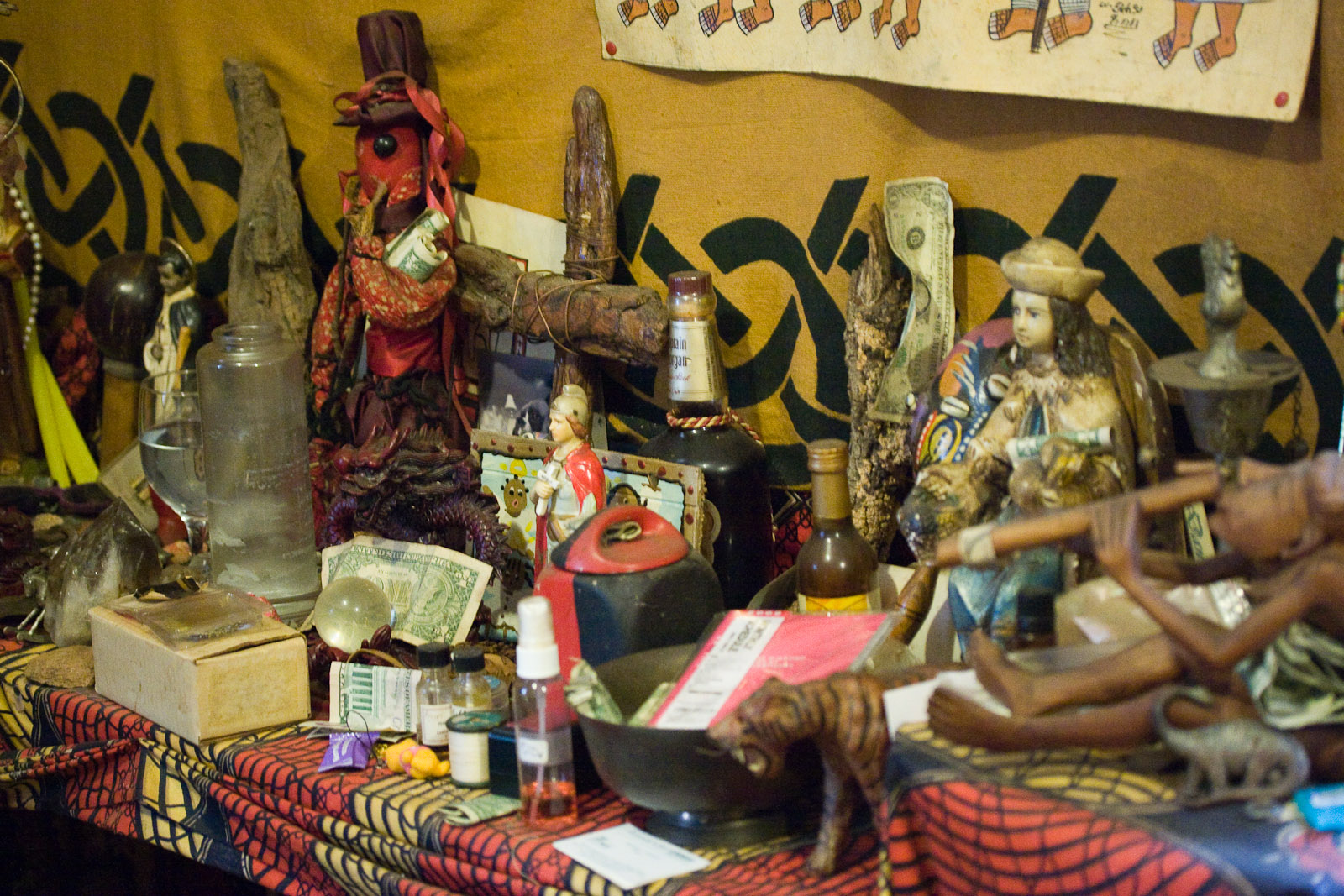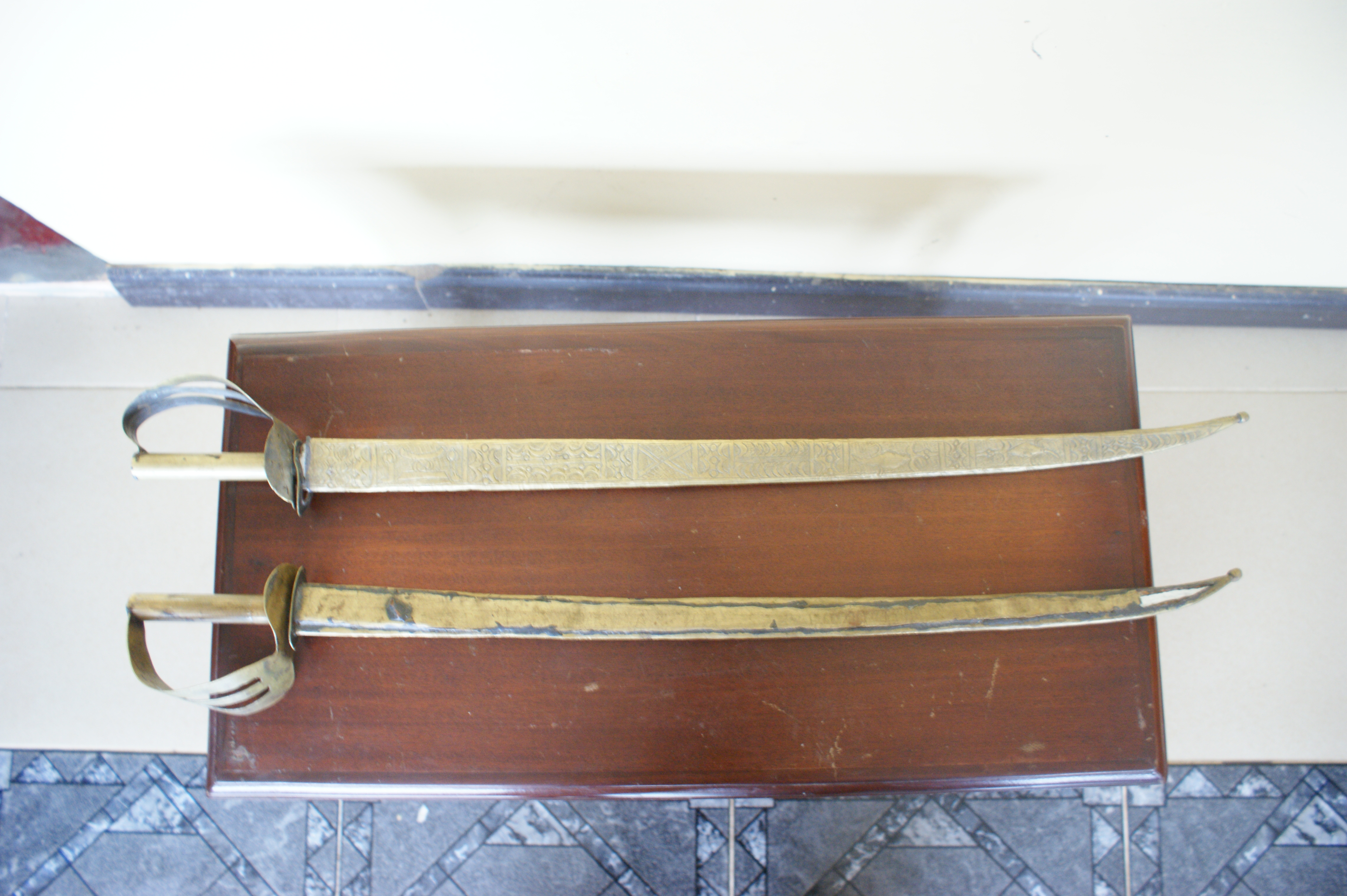|
Myalism
Myal is an Afro-Jamaican spirituality. It developed via the creolization of African religions during the slave era in Jamaica. It incorporates ritualistic magic, spiritual possession and dancing. Unlike Obeah, its practices focus more on the connection of spirits with humans. Over time, Myal began to meld with Christian practices and created the religious tradition known as Revivalism. History Origin The practice of Myal as a spirit possession originated in Jamaica. It derived from the Kongo religion. It was once theorized to be of Akan origin, because of its popularity with enslaved Akans. However, Myal was also popular with enslaved Bakongo. The centrality of spirit possession is a core component of both Myal and Kongo religion. This evidence suggests that Myal is more closely related to Kongo. Myalism resulted from the cooperation of ethnically diverse enslaved Africans. The term "Myal" was first recorded by Edward Long in 1774 when describing a ritual dance done by enslav ... [...More Info...] [...Related Items...] OR: [Wikipedia] [Google] [Baidu] |
Kumina
Kumina is an Afro-Jamaican religion, dance and music form. Kumina has practices that include secular ceremonies, dance and music that developed from the beliefs and traditions brought to the island by Kongo enslaved people and indentured labourers, from the Congo region of West Central Africa, during the post-emancipation era. It is mostly associated with the parish of St. Thomas in the east of the island. However, the practice spread to the parishes of Portland, St. Mary and St. Catherine, and the city of Kingston. Kumina also gives it name to a drumming style, developed from the music that accompanied the spiritual ceremonies, that evolved in urban Kingston. The Kumina drumming style has a great influence on Rastafari music, especially the Nyabinghi drumming, and Jamaican popular music. Count Ossie was a notable pioneer of the drumming style in popular music and it continues to have a significant influence on contemporary genres such as reggae and dancehall. The '' K ... [...More Info...] [...Related Items...] OR: [Wikipedia] [Google] [Baidu] |
Afro-American Religion
African diaspora religions, also described as Afro-American religions, are a number of related beliefs that developed in the Americas in various areas of the Caribbean, Latin America, and the Southern United States. They derive from traditional African religions with some influence from other religious traditions, notably Christianity and Islam.Fulop, Timothy Earl; Albert J. Raboteau, Raboteau, Albert J., eds. (1997). African American Religion: Interpretive Essays in History and Culture'. London; New York: Routledge. . Characteristics Afro-American religions involve ancestor veneration and include a creator deity along with a pantheon (religion), pantheon of divine spirits such as the Orisha, Loa, Vodun, Nkisi, and Alusi, among others. In addition to the religious syncretism of these various African traditions, many also incorporate elements of folk Catholicism including folk saints and other forms of folk religion, Native American religion, Kardecist spiritism, Spiritism, Spirit ... [...More Info...] [...Related Items...] OR: [Wikipedia] [Google] [Baidu] |
Nyame
Onyame, Nyankopɔn (Onyankopɔng) or Ɔdomankoma is the supreme god of the Akan people of Ghana, who is most commonly known as Nyame. The name means "The one who knows and sees everything", and "omniscient, omnipotent sky deity" in the Akan language. Names Odomankoma The name Ɔdomankoma, spelt Odomankoma in English, means "Creator" which is said to be derived from the literal translations of the two sections of his name, "Dom" (meaning state or universe) and "Anko-ma" (meaning "who alone gives"). The name "Odomankoma" therefore means, in the literal sense, "The only one who gives the universe or world". However, others believe Odomankoma is an abbreviation of Odomankoma's full and true name: O-doma-ara-nko-ma in which all parts of the name (excluding the first o) has a meaning: "Doma" meaning 'abundance', "nko" meaning "only" or "alone", "ma" meaning "full of", coming together to mean "The one who is uninterruptedly, infinitely, and exclusively full of the manifold, namely, ... [...More Info...] [...Related Items...] OR: [Wikipedia] [Google] [Baidu] |
Bob Marley
Robert Nesta Marley (6 February 1945 – 11 May 1981) was a Jamaican singer, songwriter, and guitarist. Considered one of the pioneers of reggae, he fused elements of reggae, ska and rocksteady and was renowned for his distinctive vocal and songwriting style. Marley increased the visibility of Jamaican music worldwide and became a global figure in popular culture. He became known as a Rastafarian icon, and he infused his music with a sense of spirituality. Marley is also considered a global symbol of Jamaican music and Culture of Jamaica, culture and identity and was controversial in his outspoken support for democratic social reforms. Marley also supported the legalisation of Cannabis (drug), cannabis and advocated for Pan-Africanism. Born in Nine Mile, Jamaica, Marley began his career in 1963, after forming the group Teenagers with Peter Tosh and Bunny Wailer, which became Bob Marley and the Wailers, the Wailers. In 1965, they released their debut studio album, ' ... [...More Info...] [...Related Items...] OR: [Wikipedia] [Google] [Baidu] |
Akrafena
An akrafena (Twi: "sword") is an Akan sword, originally meant for warfare but also forming part of Akan heraldry. The foremost example of an ''akrafena'' is the ''Mponponsuo'' (meaning "responsibility"), which belonged to Opoku Ware II. It has survived to the present day because it is still occasionally used in ceremonies, such as the Akwasidae Festival. The expert use of akrafena is also a martial art, utilising the blade in conjunction with knives, improvised weapons, street-fighting, hand-to-hand combat, joint locks, grappling and weapon disarming techniques, as well as using the martial art of akrafena unarmed. The akrafena martial art is the national sport of the Ashanti Region. Design The sword has three parts: a blade, usually made of some metal such as iron; a hilt of carved wood or metal; and the sheath, usually made of animal hide like leopard, leather and electric eel skin. The blade in ritual swords may not have a sharp cutting edge. It often has incised lines o ... [...More Info...] [...Related Items...] OR: [Wikipedia] [Google] [Baidu] |
Revival Of 1800
The Revival of 1800, also known as the Red River Revival, was a series of evangelical Christian meetings which began in Logan County, Kentucky. These ignited the subsequent events and influenced several of the leaders of the Second Great Awakening. The events represented a transition from British traditions to innovations arising from the unique needs and culture of Americans in the new century, especially on the frontier. The startling manifestations of revival fervor that first occurred in June 1800 at the Red River Meeting House, a small Presbyterian congregation led by James McGready, began as a Scottish sacrament service, but led to the important innovation of serial religious services later known as camp meetings. These multi-day gatherings hosted people from great distances for outdoor services focused on arousing the heart-felt conversion and religious enthusiasm that came to characterize especially rural evangelicalism throughout the nineteenth century. The Logan County ... [...More Info...] [...Related Items...] OR: [Wikipedia] [Google] [Baidu] |
Duppy
Duppy is a word of African origin commonly used in various Caribbean Islands, including The Bahamas, Barbados and Jamaica, meaning ghost or spirit.Jamaican Folklore , Duppy The word is sometimes spelled duffy. It is both singular and plural. Much of Caribbean revolves around duppy. Duppy are generally regarded as malevolent spirits who bring misfortune and woe on those they set upon. They are said to mostly come out and haunt people at night, and people from around the islands claim to have seen them. The "Rolling Calf" (a scary creature said to have chains around its body), [...More Info...] [...Related Items...] OR: [Wikipedia] [Google] [Baidu] |
Bedwardism
Bedwardism, more properly the Jamaica Native Baptist Free Church, was a religious movement of Jamaica. Origins Bedwardism was founded in August Town, Saint Andrew Parish, in 1889 by Harrison "Shakespeare" Woods, an African-American emigrant to Jamaica, and named for Alexander Bedward (1848–1930), who was referred to as "That Prophet" and "Shepherd." It was one of the most popular Afro-Jamaican politico-religious movements from the 1890s to the 1920s. Bedwardism attracted tens of thousands of followers with a call for social justice, as well as socioeconomic programs for the lower classes. Beliefs Bedwardian literature describes Bedwardism as a new religion, the successor to Christianity and Judaism. Its actual teachings differ little from those of most Christian denominations, stressing the importance of recognizing Jesus Christ as both God and man in part of the Trinity, as well as frequent fasting. Even so, because the movement likened the ruling classes to the Pharisees ... [...More Info...] [...Related Items...] OR: [Wikipedia] [Google] [Baidu] |
Tano (Ta Kora)
Tano (Tanoɛ), whose true name is Ta Kora (abbreviated from Tano Kora/Akora, not to be confused with Tano Akora) and is known as Tando to the Fante people, Fante is the Abosom of war and strife in Akan religion, Akan mythology and Abosom of Thunder and Lightning in the Asante people, Asante mythology of Ghana as well as the Anyi people, Agni mythology of the Ivory Coast. He represents the Tano River, which is located in Ghana. He is regarded as the highest and king of all Obosom. The Tano abosom are his sons in Akan mythology. Names and epithets Tano is commonly as ''Kora'', ''Ta Akora'', ''Tano Kora'' and/or ''Tano Akora'' in the Techiman-Bono area. The name ''Ta Kora'' most likely means the “immense father' as “kora” means "the immense" and “ta” may be derived from a word meaning "father", stemming from how he is the father of a majority of the Akan religion#Abosom, abosom. "Kora" can also mean "to mend", which means the name can also translate to "Tano The Mender” or ... [...More Info...] [...Related Items...] OR: [Wikipedia] [Google] [Baidu] |
Edward Long (colonial Administrator)
Edward Long (23 August 1734 – 13 March 1813) was a British judge and historian best known for writing a book about the history of Jamaica in 1774 that was heavily rooted in proslavery thought. Early life Long was the fourth son of Samuel Long (1700–1757) of Longville, Jamaica, son of Charles Long MP, and his wife Mary Tate, born 23 August 1734 at St. Blazey, in Cornwall. His great-grandfather, Samuel Long, had arrived on the island in 1655 as a lieutenant in the English army of conquest, and the family established itself as part of the island's governing planter elite. His sister, Catherine Maria Long, married Sir Henry Moore, 1st Baronet (Governor of Jamaica), and Long, in Jamaica from 1757, became his private secretary. In 1752, Long became a law student at Gray's Inn, and from 1757 until 1769 he was resident in Jamaica. During this period he explored inside the Riverhead Cave, the Runaway Bay Caves and the Green Grotto. He was judge in the local vice admiralty court, ... [...More Info...] [...Related Items...] OR: [Wikipedia] [Google] [Baidu] |
Christianity In Jamaica
Christianity was introduced by Spanish settlers who arrived in Jamaica in 1509. Thus, Roman Catholicism was the first Christian denomination to be established. Later, Protestant missions were very active, especially the Baptists, and played a key role in the abolition of slavery. Denominations Anglicanism Anglicanism was introduced by the British in 1664. The first church was built on the spot of the Spanish Church of the Red Cross in Spanish Town, and is the oldest Anglican cathedral outside the British Isles and the oldest place of continuous worship in the western hemisphere. By the early nineteenth century, abolitionism had propelled other denominations to the forefront, and threatened the established Anglican church. Thus, in 1824, the Diocese of Jamaica, which also included Belize and the Bahamas, was established. In 1861, the Bahamas became a separate diocese, and, in 1891, the same happened to Belize. During the 1960s, the Cayman Islands were added, and, in 2001, the di ... [...More Info...] [...Related Items...] OR: [Wikipedia] [Google] [Baidu] |


